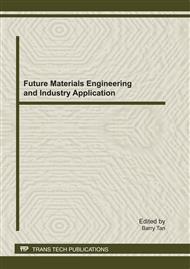p.332
p.338
p.342
p.348
p.354
p.361
p.367
p.375
p.382
Pilot Scale Study on Biological Nutrient Removal and Membrane Fouling Alleviation in Combined Membrane Bioreactor for Municipal Wastewater Treatment
Abstract:
To solve the problem of eutrophication in receiving water, a novel Membrane Bioreactor (MBR) with combined configuration was designed for municipal wastewater treatment and reclamation. By dividing bioreactor into three zones, the combined MBR operated under anoxic, anaerobic and aerobic conditions. It provided optimum conditions for nitrification, denitrifying and phosphate accumulating bacterial growth which resulted in high biological nutrient removal rate directly. The operational performance of combined MBR pilot plant showed that it exhibited high nutrient removal rate on Chemical oxygen demand (CODcr), total nitrogen (TN) and total phosphorus (TP). The mean value of effluent CODcr, TN and TP removal rate was 90.63%, 63.05% and 60.51% respectively during 180 days of operation. In order to obtain stable membrane flux, the combined MBR packed with fibrous bio-film carrier and added diatomite. Furthermore, it could alleviate membrane fouling effectively. As a result, the combined MBR improved effluent water quality significantly and alleviated membrane fouling remarkably.
Info:
Periodical:
Pages:
354-360
Citation:
Online since:
October 2011
Authors:
Price:
Сopyright:
© 2012 Trans Tech Publications Ltd. All Rights Reserved
Share:
Citation:



